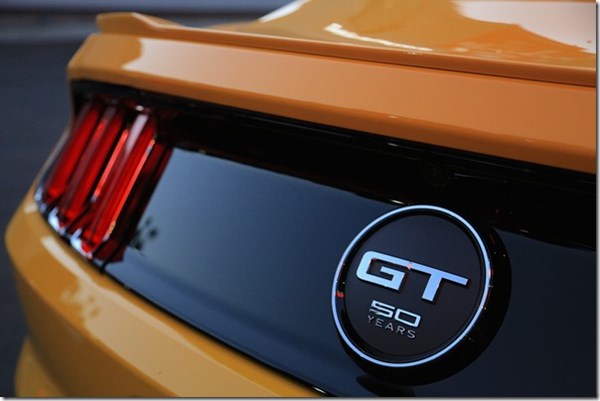2015 Ford Mustang GT
At the risk of committing some sort of automotive heresy, I must admit that I’ve never been taken with the Ford Mustang.
#interior #electronics
At the risk of committing some sort of automotive heresy, I must admit that I’ve never been taken with the Ford Mustang. And mind you, I can recall being taken to the Dearborn Assembly Plant back in the day by an uncle who worked there to see the first-generation of the legendary pony car being built.
Generations III and IV of the car—which brings us from 1979 to 2004—were not as compelling as other products in the Ford lineup; arguably—and people will argue—the first four generations of the Ford Taurus (1986-2007) were more breakthrough than what was going on with the halo car. (Of course, not many people agree with that point of view, not even in Dearborn, as Generation V became the Ford Five Hundred and it was only because Alan Mulally thought that the Taurus name was a good one do we see the name on cars coming out of Chicago Assembly.)
So with my indifference as a base line, I have got to say that the 2015 Mustang GT absolutely changed my entire perspective about the car.


Despite the 5.0-liter V8, to which Ford Powertrain engineers fitted an upgraded valvetrain and cylinder heads so that it produces 435 hp and 400 lb-ft of torque, it isn’t the performance that got me.
It is the way the car looks.
This car is low—yes, the roof height is reduced—and wide—both in terms of track width and rear fender size. The fastback is faster, with greater rake to both the windshield and the backlight.
The proportions are absolutely nailed with this car from all angles. Oftentimes, it seems, when cars are lowered they are insufficiently wide, which, from the rear view, gives they a slightly tippy appearance.
But the Ford Design team clearly looked at this car with a 360-degree view to get everything right.

It looks fast. It looks aggressive. But it looks contemporary. There is often talk of “American design” when it comes to cars, which is a fairly fuzzy notion. But it strikes me that this sixth-generation Mustang, which Ford is selling in more markets than ever before, is a car that solidifies that fuzziness, that says “American muscle car,” but not muscular like a prize fighter, but more like a gymnast or other lithe athlete.
On the inside, there is a harkening to what may be the source of the name of the car, the P-51 Mustang World War II-era fighter plane. The switches are literally switches and surfaces that are otherwise often clad in a wood-appearing substance have a metallic sheen.

This is a completely contemporary car, not only in the context of having SYNC and Sirius, but an array of additional standard and optional amenities. Although it may sound corny, I had a moment of surprised delight one night while approaching the car to discover that there are puddle lights on the bottom of the side-view mirrors that project the Mustang logo on the pavement right below the door.
Clearly, this is a car that has been designed taking into account all the details, something that isn’t always the case.
Selected specs
Engine: 5.0-liter Ti-VCT V8
Material: Aluminum block and heads
Horsepower: 435 @ 6,500 rpm
Torque: 400 lb-ft @ 4,250 rpm
Transmission: Six-speed automatic w/paddle shifters
Steering: Electrically assisted rack-and-pinion
Wheelbase: 107.1 in.
Length: 188.3 in.
Width 75.4 in.
Height: 54.4 in.
EPA passenger volume: 84.5-cu. ft.
Curb weight: 3,729 lb.
EPA fuel economy: city/highway/combined: 16/25/19 mpg
RELATED CONTENT
-
Ford Expedition: Bigger, Better
If you’re going to introduce a new full-size SUV, you might as well do it in a place where there are more of them sold than anywhere else, says Joe Hinrichs, Ford president of the Americas.
-
Mercedes-Benz Sprinter 2500 Passenger Van
It is hard to describe how large—more precisely, long and spacious—the Sprinter Passenger Van is in a meaningful way.
-
2017 Buick LaCrosse Premium AWD
The Buick design team deserves the strongest of accolades for their work at transforming the appearance of the brand from one of, well something akin to “the last ride” to one of contemporary stylishness befitting of a the cohort of automotive customers who didn’t cast their first presidential ballot in 1968 or earlier.

